









不同水体的氢氧稳定同位素可用于植物水分利用来源、水汽输送、土壤水运移和补给机制、补给源和地下水机制、水体蒸发、植物蒸腾和土壤蒸发的区分、径流的形成和汇合、重建古气候等方面的研究。因而引起了水文学家,生态学家以及气候学家等的广泛关注。但问题是:在进行水稳定同位素测试之前如何将植物木质部和土壤中的水分无分馏的提取出来?
LI-2100是LICA自主研发的一款全自动真空冷凝抽提系统,且已通过CE认证。从根本上解决了植物和土壤水分提取的难题,克服了传统液氮冷却的繁琐,不仅可以防止同位素分馏,而且安全高效,不会对植物和土壤造成破坏。可与LGR水同位素分析仪和质谱仪配套使用。许多科学家已经结合LI-2100和LGR的水同位素分析仪进行了诸多研究。
从研发生产至今,LI-2100在国内已经销售了近百台,国内的科研工作者利用这台仪器发表了诸多文献,得到了用户的众多好评。
随着LI-2100在国内的广泛应用及众多文献的发表,国外的一些科学家也开始关注理加公司研发生产的LI-2100,理加公司也积极在海外推广该产品,由此拉开了LI-2100走出国门、走向海外的序幕。
LI-2100在海外的安装案例
1. 巴西国家空间研究所(INPE)
应用:利用LI-2100抽提土壤、植物中的水,进行同位素相关研究。
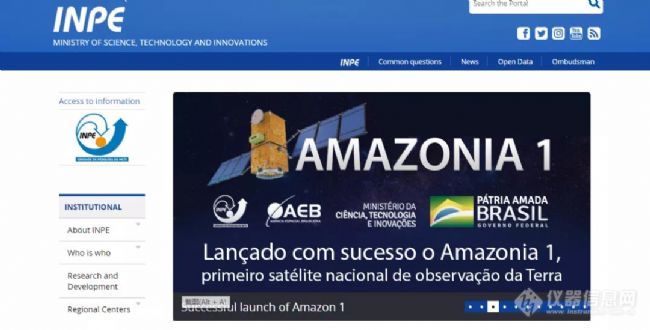
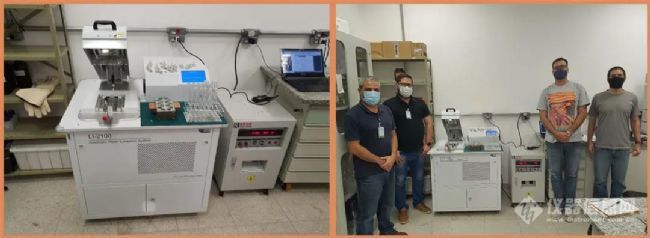
科学家简介:
Laura De Simone Borma (劳拉·德·西蒙娜·博尔玛)
1988 年毕业于欧鲁普雷图联邦大学土木工程专业,1991 年获得里约热内卢联邦大学土木工程硕士学位,以及里约热内卢联邦大学土木工程-环境岩土工程博士学位(1998)。自 2009 年起在 INPE(国家空间研究所)担任研究员,从事生态水文学和土壤物理学领域的工作,重点是实地观察陆地和极端天气事件对土壤-植物-大气相互作用以及气候变化、土地利用和覆盖变化的影响。她目前是 INPE 的 PGCST(地球系统科学研究生)和 PGSER(遥感研究生)的教授。协调 CCST/INPE 的生态水文学 (LabEcoh) 和生物地球化学 (LapBio) 实验室。她是 ISMC(国际土壤建模联盟)的成员。她对巴西不同生物群落中土壤-植物-大气相互作用、生态水文学以及水和气候调节的生态系统服务领域的研究感兴趣。
LI-2100在海外的安装案例
2. 澳大利亚Flinders大学 College of Science and Engineering
应用:利用LI-2100抽提土壤、植物中的水,进行同位素相关研究。
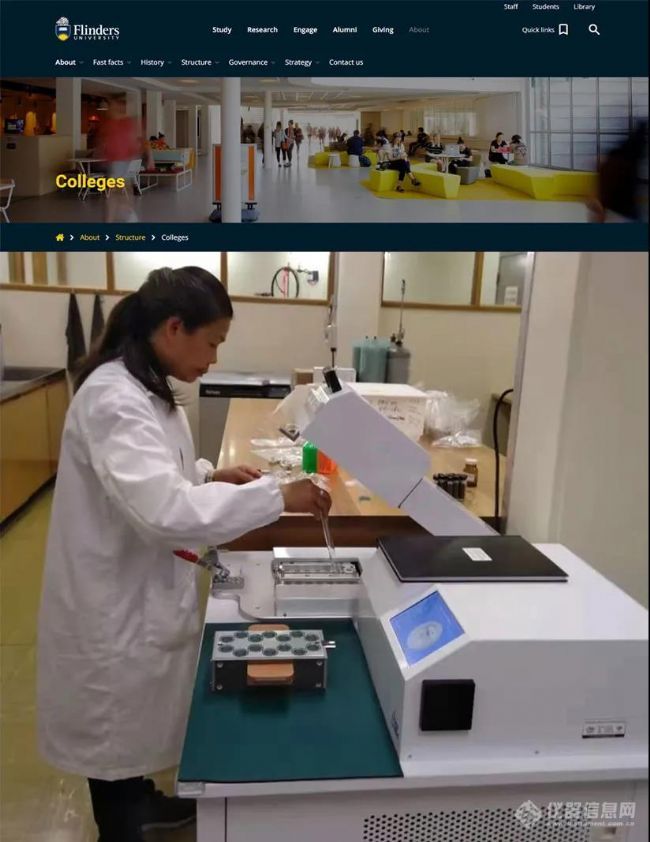
LI-2100在国内的部分安装案例
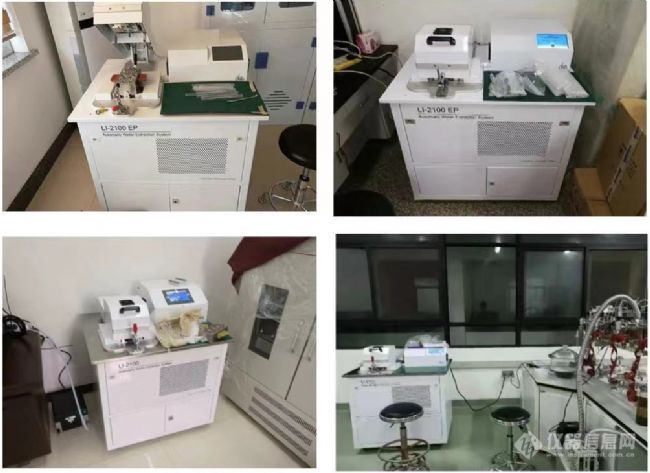
1、沈阳气象局
2、中国林业科学研究院亚热带林业研究所
3、广西植物园
4、中国科学院西双版纳热带植物园
...
发表文献
1. Qiu X, Zhang MJ, Wang SJ. 2016. Preliminary research on hydrogen and oxygen stable isotope characteristics of different water bodies in the Qilian Mountains, northwestern Tibetan Plateau. Environmental Earth Sciences, 75(23):1491.
2. Wang J, Fu BJ, Lu N et al. 2017. Seasonal variation in water uptake patterns of three plant species based on stable isotopes in the semi-arid Loess Plateau. Science of the Total Environment, 609: 27-37.
3. Huang XY, Meyers PA. 2018. Assessing paleohydrologic controls on the hydrogen isotope compositions of leaf wax n-alkanes in Chinese peat deposits. Palaeogeography, Palaeoclimatology, Palaeoecology, doi: 10.1016/j.palaeo.2018.12.017.
4. Sun L, Yang L, Chen LD et al. 2018. Short-term changing patterns of stem water isotopes in shallow soils underlain by fractured bedrock. Hydrology Research, doi: 10.2166/nh.2018.086.
5. Zhang YG, YU XX, Chen LH. 2018. Comparison of the partitioning of evapotranspiration –numerical modeling with different isotopic models using various kinetic fractionation coefficients. Plant and Soil, 430: 307-328, https://doi.org/10.1007/s11104-018-3737-z.
6. Zhao X, Li FD, Ai ZP et al. 2018. Stable isotope evidences for identifying crop water uptake in a typical winter wheat–summer maize rotation field in the North China Plain. Science of the Total Environment, 121-131.
7. Zhu G, Guo H, Qin, D et al. 2018. Contribution of recycled moisture to precipitation in the monsoon marginal zone: estimate based on stable isotope data. Journal of Hydrology, doi: 10.1016/j.jhydrol.2018.12.014.
8. Che CW, Zhang MJ, Argiriou AA et al. 2019. The stable isotopic composition of different water bodies at the Soil–Plant–Atmosphere Continuum (SPAC) of the western Loess Plateau, China, Water, doi:10.3390/w11091742.
9. Li EG, Tong YQ, Huang YM et al. 2019. Responses of two desert riparian species to fluctuation groundwater depths in hyperarid areas of Northwest China. Ecohydrology, 1-12.
10. Liu JC, Shen LC, Wang ZX et al. 2019. Response of plants water uptake patterns to tunnels excavation based on stable isotopes in a karst trough valley. Journal of Hydrology, 571: 485-493.
11. Liu Y, Zhang XM, Zhao S et al. 2019. The depth of water taken up by walnut trees during different phenological stages in an irrigated arid hilly area in the Taihang Mountains. Forests, doi:10.3390/f10020121.
12. Liu Z, Ma FY, Hu TX et al. 2019. Using stable isotopes to quantify water uptake from different soil layers and water use efficiency of wheat under long-term tillage and straw return practices. Agricultural Water Management, https://doi.org/10.1016/j.agwat.2019.105933.
13. Luo ZD, Guan HD, Zhang XP et al. 2019. Examination of the ecohydrological separation hypothesis in a humid subtropical area: Comparison of three methods. Journal of Hydrology, 571, 642-650.
14. Qiu X, Zhang MJ, Wang SJ et al. 2019. The test of the ecohydrological separation hypothesis in a dry zone of the northeastern Tibetan Plateau. Ecohydrology, https://doi.org/10.1002/eco.2077.
15. Qiu X, Zhang MJ, Wang SJ et al. 2019. Water stable isotopes in an Alpine setting of the northeastern Tibetan Plateau. Water, doi:10.3390/w11040770.
16. Wang J, Fu BJ, Lu N et al. 2019. Water use characteristics of native and exotic shrub species in the semi-arid Loess Plateau using an isotope technique. Agriculture, Ecosystems and Environment, 276: 55-63.
17. Wang J, Lu N, Fu BJ. 2019. Inter-comparison of stable isotope mixing models for determining plant water source partitioning. Science of the Total Environment, 666: 685-693.
18. Wu X, Zheng XJ, Li Y, Xu GQ. 2019. Varying responses of two Haloxylon species to extreme drought and groundwater depth. Environmental and Experimental Botany, 158, 63-72.
19. Xu YY, Yi Y, Yang X, Dou YB. 2019. Using stable hydrogen and oxygen isotopes to distinguish the sources of plant leaf surface moisture in an urban environment. Water, doi:10.3390/w11112287.
20. Dai JJ, Zhang XP, Luo ZD et al. 2020. Variation of the stable isotopes of water in the soil-plant-atmosphere continuum of a Cinnamomum camphora woodland in the East Asian monsoon region. Journal of Hydrology, https://doi.org/10.1016/j.jhydrol.2020.125199.
21. Jiang PP, Wang HM, Meinzer FC et al. 2020. Linking reliance on deep soil water to resource economy strategies and abundance among coexisting understorey shrub species in subtropical pine plantations. New Phytologist, doi: 10.1111/nph.16027.
22. Liu L, Bai YX, She WW et al. 2020. A nurse shrub species helps associated herbaceous plants by preventing shade‐induced evaporation in a desert ecosystem. Land Degradation and Development, https://doi.org/10.1002/ldr.3831.
23. Liu Z, Ma FY, Hu TX. 2020. Using stable isotopes to quantify water uptake from different soil layers and water use efficiency of wheat under long-term tillage and straw return practices. Agricultural Water Management, https://doi.org/10.1016/j.agwat.2019.105933.
24. Pan YX, Wang XP, Ma XZ et al. 2020. The stable isotopic composition variation characteristics of desert plants and water sources in an artificial revegetation ecosystem in Northwest China. Catena, https://doi.org/10.1016/j.catena.2020.104499.
25. Su PY, Zhang MJ, Qu DY et al. 2020. Contrasting water use strategies of Tamarix ramosissima in different habitats in the Northwest of Loess Plateau, China. Water, 12, 2791; doi:10.3390/w12102791.
26. Wang J, Fu BJ, Wang LX et al. 2020. Water use characteristics of the common tree species in different plantation types in the Loess Plateau of China. Agricultural and Forest Meteorology, https://doi.org/10.1016/j.agrformet.2020.108020.
27. Xiang W, Evaristo J, Li Z. 2020. Recharge mechanisms of deep soil water revealed by water isotopes in deep loess deposits. Geoderma, https://doi.org/10.1016/j.geoderma.2020.114321.
28. Xiao X, Zhang F, Li XY et al. 2020. Hydrological functioning of thawing soil water in a permafrost-influenced alpine meadow hillslope. Vadose Zone Journal, doi: 10.1002/vzj2.20022.
29. Yang B, Meng XJ, Singh AK et al. 2020. Intercrops improve surface water availability in rubber-based agroforestry systems. Agriculture, Ecosystems and Environment, 298, 106937.
30. Yang B, Zhang WJ, Meng XJ et al. 2020. Effects of a funnel-shaped canopy on rainfall redistribution and plant water acquisition in a banana (Musa spp.) plantation. Soil, Tillage Research, https://doi.org/10.1016/j.still.2020.104686.
31. Yong LL, Zhu GF, Wan QZ et al. 2020. The soil water evaporation process frommountains based on the stable isotope composition in a headwater basin and northwest China. Water, 12, 2711; doi:10.3390/w12102711.
32. Zhang Y, Zhang MJ, Qu DY et al. 2020. Water use strategies of dominant species (Caragana korshinskii and Reaumuria soongorica) in natural shrubs based on stable isotopes in the Loess Hill, China. Water, doi:10.3390/w12071923.
33. Zhang YG, Wang DD, Liu ZQ et al. 2020. Assessment of leaf water enrichment of Platycladus orientalis using numerical modeling with different isotopic models. Ecological Indicators, https://doi.org/10.1016/j.ecolind.2019.105995.
34. Li Y, Ma Y, Song XF et al. 2021. A δ2H offset correction method for quantifying root water uptake of riparian trees. Journal of Hydrology, https://doi.org/10.1016/j.jhydrol.2020.125811.
35. Yang B, Meng XJ, Zhu XA et al. 2021. Coffee performs better than amomum as a candidate in the rubber agroforestry system: Insights from water relations. Agricultural Water Management, doi.org/10.1016/j.agwat.2020.106593.
36. Qiu X, Zhang MJ, Dong ZW et al. 2021. Contribution of recycled moisture to precipitation in northeastern Tibetan Plateau: A case study based on Bayesian estimation. Atmosphere, 12, 731. https://doi.org/10.3390/ atmos12060731.
37. Zhao Y, Wang L. 2021. Insights into the isotopic mismatch between bulk soil water and Salix matsudana Koidz xylem water from root water stable isotope measurements. Hydrology and Earth System Sciences, 25, 3975-3989.
38. Shi PJ, Huang YN, Yang CY et al. 2021. Quantitative estimation of groundwater recharge in the thick loess deposits using multiple environmental tracers and methods. Journal of Hydrology, https://doi.org/10.1016/j.jhydrol.2021.126895.
39. Zhu GF, Yong LL, Zhang ZX et al. 2021. Infiltration process of irrigation water in oasis farmland and its enlightenment to optimization of irrigation mode: Based on stable isotope data. Agricultural Water Management, https://doi.org/10.1016/j.agwat.2021.107173.
40. Fang FL, Li YJ, Yuan DP et al. 2021. Distinguishing N2O and N2 ratio and their microbial source in soil fertilized for vegetable production using a stable isotope method. Science of the Total Environment, https://doi.org/10.1016/j.scitotenv.2021.149694.
41. Wang JX, Zhang MJ, Argiriou AA et al. 2021. Recharge and infiltration mechanisms of soil water in the floodplain revealed by water-stable isotopes in the upper Yellow River. Sustainability, 13, 9369.
42. Zhu G F, Yong L L, Xi Z et al. 2021. Evaporation, infiltration and storage of soil water in different vegetation zones in Qilian mountains: From a perspective of stable isotopes. Hydrology and Earth System Sciences, https://doi.org/10.5194/hess-2021-376.
43. Qiu GY, Wang B, Li T et al. 2021. Estimation of the transpiration of urban shrubs using the modified three-dimensional three-temperature model and infrared remote sensing. Journal of Hydrology, https://doi.org/10.1016/j.jhydrol.2020.125940.
44. Tang YK, Wang LN, Yu YQ et al. 2021. Differential response of plant water consumption to rainwater uptake for dominant tree species in the semiarid Loess Plateau. Hydrology and Earth System Sciences, https://doi.org/10.5194/hess-2021-351.
45. Lin W, Ding JJ, Li YJ et al. 2021. Determination of N2O reduction to N2 from manure-amended soil based on isotopocule mapping and acetylene inhibition. Atmospheric Environment, https://doi.org/10.1016/j.atmosenv.2020.117913.
46. Liu JZ, Wu HW, Zhang HW et al. 2021. Controls of seasonality and altitude on generation of leaf water isotopes. Hydrology and Earth System Sciences, https://doi.org/10.5194/hess-2021-289.
47. Qin WY, Chen G, Wang P et al. 2021. Climatic and biotic influences on isotopic differences among topsoil waters in typical alpine vegetation types. Catena, https://doi.org/10.1016/j.catena.2021.105375.
48. Zhang X, Zhang QL, Xu ZH et al. 2021. Mechanism of environmental factors regulating water consumption of Larix gmelinii forests. Journal of Soils and Sediments, https://doi.org/10.1007/s11368-021-03025-7.
49. Zhu WR, Li WH, Shi PL et al. 2021. Intensified interspecific competition for water after afforestation with Robinia pseudoacacia into a native shrubland in the Taihang Mountains, northern China. Sustainability, 13(2), 807; https://doi.org/10.3390/su13020807.
50. Liu ZH, Jia GD, Yu XX et al. 2021. Morphological trait as a determining factor for Populus simonii Carr. to survive from drought in semi-arid region. Agricultural Water Management, https://doi.org/10.1016/j.agwat.2021.106943.
51. Zhu GF, Yong LL, Zhang ZX et al. 2021. Effects of plastic mulch on soil water migration in arid oasis farmland: Evidence of stable isotopes. Catena, https://doi.org/10.1016/j.catena.2021.105580.
52. Zhao Y, Wang L, Knighton J et al. 2021. Contrasting adaptive strategies by Caragana korshinskii and Salix psammophila in a semiarid revegetated ecosystem. Agricultural and Forest Meteorology, https://doi.org/10.1016/j.agrformet.2021.108323.
53. Shi Y, Jia WX, Zhu GF et al. 2021. Hydrogen and oxygen isotope characteristics of water and the recharge sources in subalpine of Qilian Mountains, China. Polish Journal of Environmental Studies, 30, 3, 2325-2339.
54. Wu A, Behzad HM, He QF et al. 2021. Seasonal transpiration dynamics of evergreen Ligustrum lucidum linked with water source and water-use strategy in a limestone karst area, southwest China. Journal of Hydrology, https://doi.org/10.1016/j.jhydrol.2021.126199.
55. 周盼盼, 张明军, 王圣杰等. 2016. 兰州城区绿化植物稳定氢氧同位素特征. 生态学杂志, 35(11): 2942-2951.
56. 李亚飞, 于静洁, 陆凯等. 2017. 额济纳三角洲胡杨和多枝柽柳水分来源解析. 植物生态学报, 41(5): 519-528.
57. 李桐, 邱国玉. 2018. 基于稳定氢氧同位素的盐水与纯水蒸发差异分析. 热带地理, 38 (6): 857-865.
58. 霍伟杰, 蒲俊兵, 李建鸿等. 2019. 断陷盆地高原面典型岩溶洼地旱季土壤水氢氧同位素时空差异特征.中国岩溶,38(3): 307-317.
59. 戴军杰, 章新平, 罗紫东等. 2019. 长沙地区樟树林土壤水稳定同位素特征及其对土壤水分运动的指示. 环境科学研究,32(6): 974-983.
60. 胡士可和叶茂. 2020. 基于氢氧稳定同位素的柽柳水分来源分析. 广东农业科学, 47(2):54-60.
61. 李盼根, 王震洪, 李赫等. 2020. 基于稳定氢氧同位素的黄土高原不同生长年限油用牡丹水分来源研究. 水土保持通报, 40(1): 108-115.
62. 史佳美, 余新晓, 贾国栋等. 2020. 不同动力学分馏系数对北京山区侧柏叶片水δ18O的模拟. 应用生态学报, 31(6): 1827-1834.
63. 苏鹏燕, 张明军, 王圣杰等. 2020. 基于氢氧稳定同位素的黄河兰州段河岸植物水分来源. 应用生态学报, 31(6): 1835-1843.
64. 孜尔蝶·巴合提, 贾国栋, 余新晓. 2020. 基于稳定同位素分析不同退化程度小叶杨水分来源. 应用生态学报, 31(6): 1807-1816
65. 王露霞, 梁杏, 李静. 2020. 基于典型钻孔的江汉平原地下水成因分析. 地球科学, 45(2): 701-710.
66. 王锐, 章新平, 戴军杰等. 2020. 亚热带地区不同林分下植物水分利用的季节差异. 生态环境学报, 29(4): 665-675.
67. 王锐, 章新平, 戴军杰等. 2020. 亚热带典型植物水分利用来源变化的水稳定同位素分析. 水土保持学报, 34(1): 202-209.
68. 王锐, 章新平, 戴军杰等. 2020. 亚热带湿润区樟树吸水的土层来源及研究方法对比. 水土保持学报, 34(5): 267-276.
69. 郝帅和李发东. 2021. 艾比湖流域典型荒漠植被水分利用来源研究. 地理学报, 76(7): 1649-1661.
70. 李雨芊, 孟玉川, 宋泓苇等. 2021. 典型林区水分氢氧稳定同位素在土壤-植物-大气连续体中的分布特征. 应用生态学报, 32(6): 1928-1934.
71. 刘秀强, 陈喜, 刘琴等. 2021. 西北干旱区尾闾湖过渡带陆面蒸发和潜水对土壤水影响的同位素分析. 干旱区资源与环境, 35(6): 52-59.
72. 王家鑫, 张明军, 张宇等. 2021. 基于稳定同位素示踪的黄河兰州段河漫滩土壤水特征分析. 干旱区地理, 44(5): 1449-1458.
73. 王锐, 章新平, 戴军杰等. 2021. 亚热带针阔混交林土壤-植物-大气连续体(SPAC)中水稳定同位素特征. 生态环境学报, 30(6): 1148-1157.
74. 王欣, 贾国栋, 邓文平等. 2021. 季节性干旱地区典型树种长期水分利用特征与模式. 应用生态学报, 32(6): 1943-1950.
75. 武昱鑫, 张永娥, 贾国栋. 2021. 基于多种同位素模型的侧柏林生态系统蒸散组分定量拆分应用生态学报, 32(6): 1971-1979.
76. 张泽, 孙贺阳, 李陶珂等. 2021. 拆分典型草原群落蒸散组分方法研究. 中国草地学报, 43(4): 87-95.
LI-2100特点
1. 沿用传统经典的真空蒸馏冷冻方法,数据可靠
2. 无需液氮:压缩机制冷,提高安全性
3. 快速高效:一次可同时提取14个样品
4. 全自动抽提:全过程无人值守
5. 安全便捷:自我断电与自我保护功能
6. 质量控制:故障提示与自动报警
7. 全球首创:专利技术
8. 氢氧稳定同位素前处理
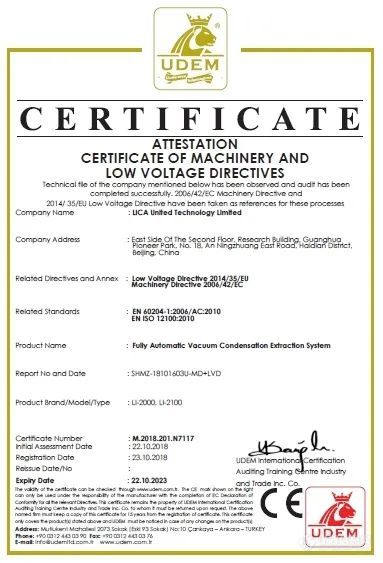
性能指标
提取速度 | >110 个/天 |
可同时提取样品数 | 14 个 |
系统真空度 | <1000 Pa |
系统漏率 | <1 Pa/s |
抽提率 | >98% |
回收率 | 99%-101% |
真空泵 | 5 L/min, 24 V, 最大压力, 0.3bar |
制冷 | 无需液氮,压缩机与冷阱结合,最低制冷温度可达 -95℃ |
制热 | 电磁制热,最高制热温度可达 130℃ |
显示与操作 | TFT LCD (7寸, 800*480; 65536). 触摸式人机友好交互界面 |
自动保护 | 温度过高或超出设定温度值,加热系统自动关闭 |
自动报警 | 制冷系统故障提示并报警与真空泄露故障报警 |
尺寸 | 90 cm (H)×74 cm (W)×110 cm (D) |
重量 | 120 Kg |
LI-2100是国际上第一款全自动植物土壤真空抽提系统,也是国内全自动植物土壤真空抽提系统的领导品牌。LI-2100为客户取得更为准确的数据提供了有利的方法和保障。理加公司专注国产生态仪器的研发和生产,是国内生态领域自主研发比较早、国产化比较好的一家公司。相信随着加大研发的投入和市场及时间的积累,理加公司一定会生产出更多、更好的生态仪器,给更多的国内外客户提供更有价值的产品。
海外市场的拓展不是一条容易走的路,但理加会坚定地走出去。
[来源:北京理加联合科技有限公司]
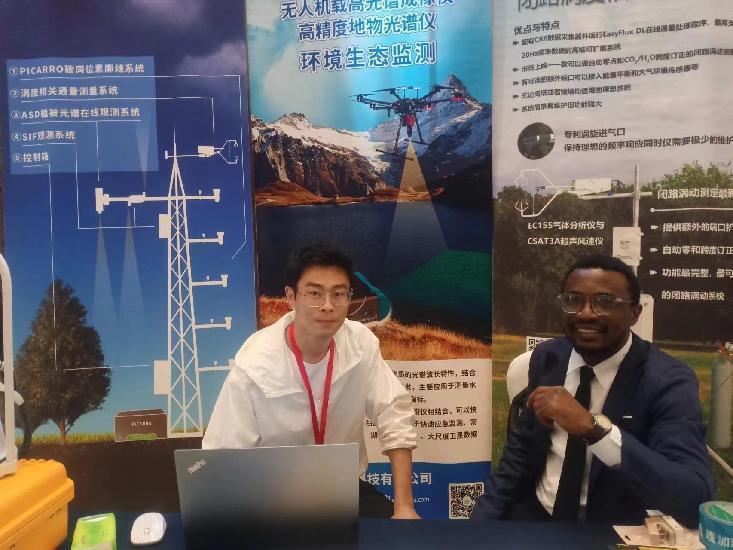
2024.06.18

通过减少土壤物理性质对光谱的耦合作用来提高高光谱遥感在估算土壤有机质的时空可迁移性:以中
2024.06.11
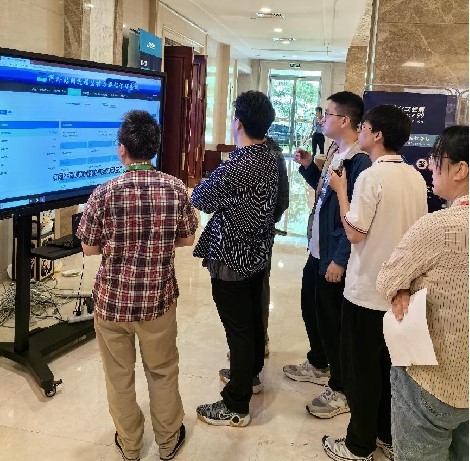
2024.05.27
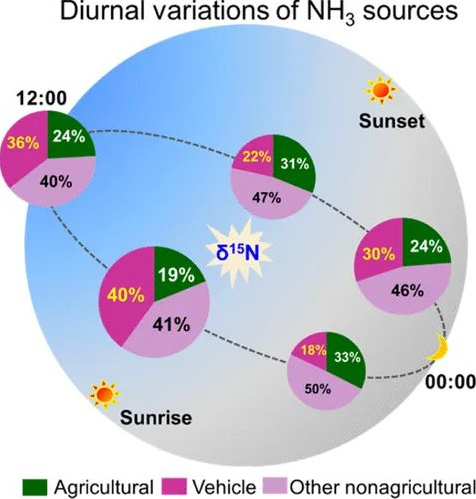
2024.05.20
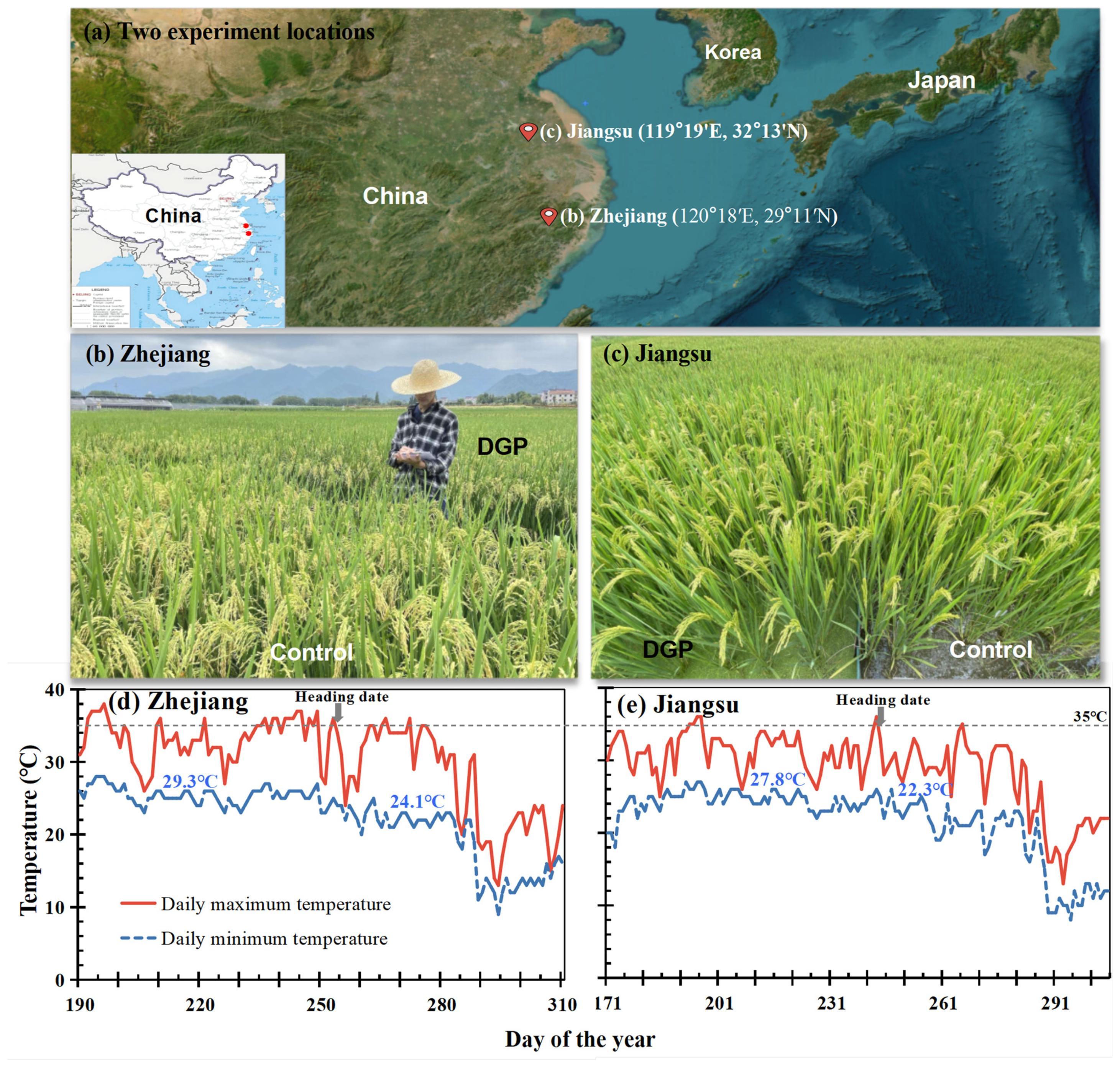
稻田中浮萍(Lemna minor L.)生长对水稻产量及其潜在原因的影响
2024.05.16

2024.05.10
版权与免责声明:
① 凡本网注明"来源:仪器信息网"的所有作品,版权均属于仪器信息网,未经本网授权不得转载、摘编或利用其它方式使用。已获本网授权的作品,应在授权范围内使用,并注明"来源:仪器信息网"。违者本网将追究相关法律责任。
② 本网凡注明"来源:xxx(非本网)"的作品,均转载自其它媒体,转载目的在于传递更多信息,并不代表本网赞同其观点和对其真实性负责,且不承担此类作品侵权行为的直接责任及连带责任。如其他媒体、网站或个人从本网下载使用,必须保留本网注明的"稿件来源",并自负版权等法律责任。
③ 如涉及作品内容、版权等问题,请在作品发表之日起两周内与本网联系,否则视为默认仪器信息网有权转载。
![]() 谢谢您的赞赏,您的鼓励是我前进的动力~
谢谢您的赞赏,您的鼓励是我前进的动力~
打赏失败了~
评论成功+4积分
评论成功,积分获取达到限制
![]() 投票成功~
投票成功~
投票失败了~